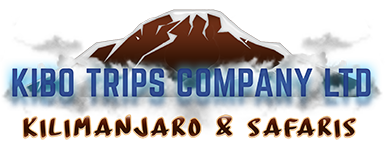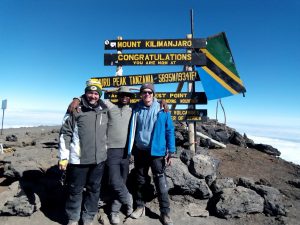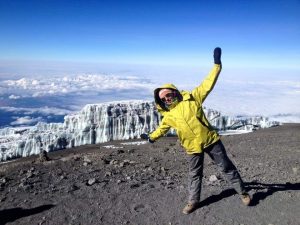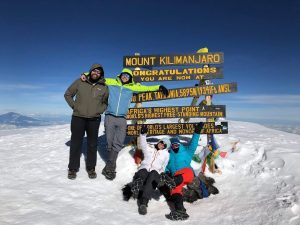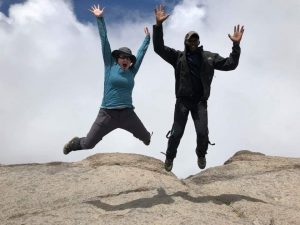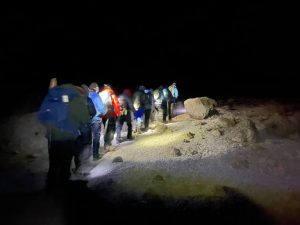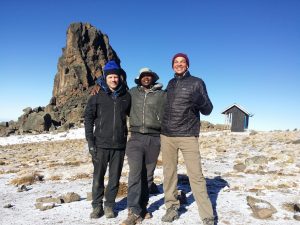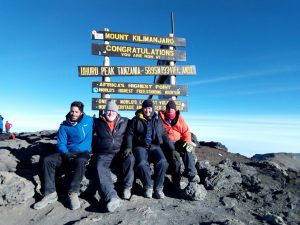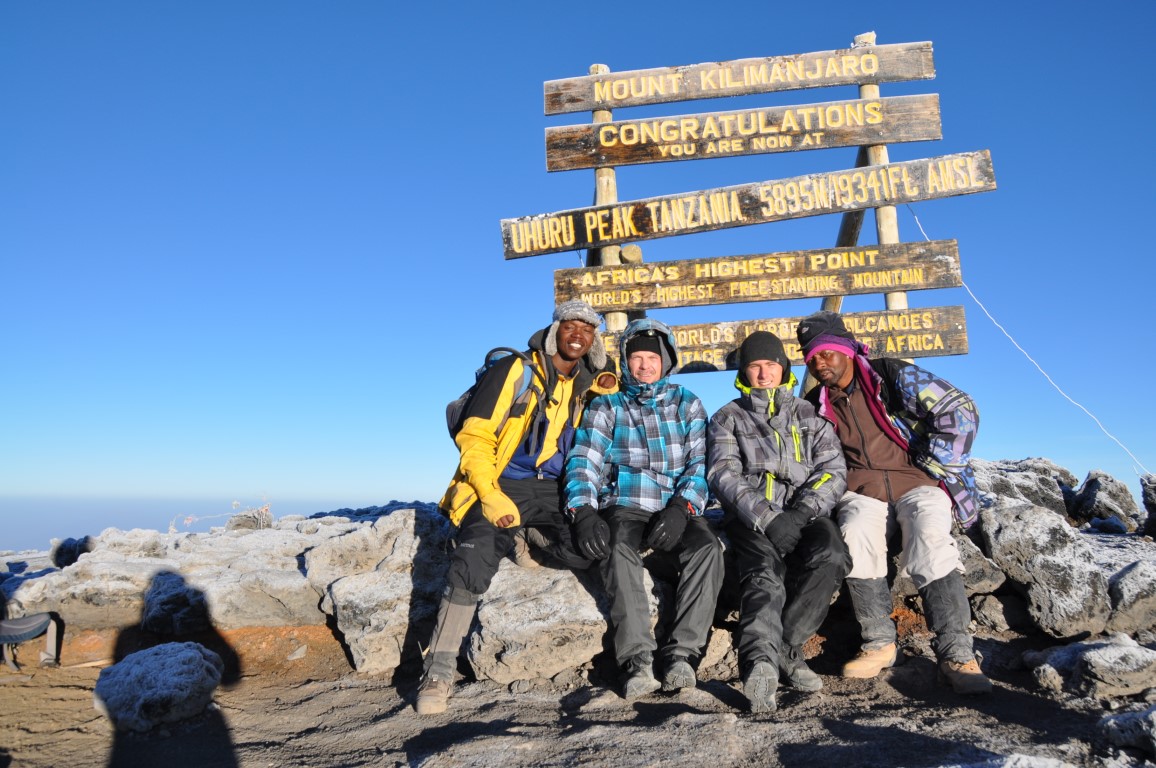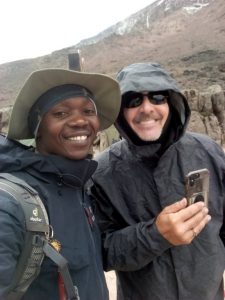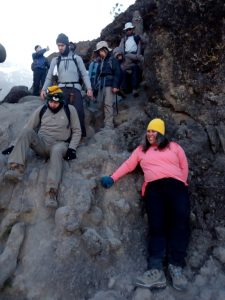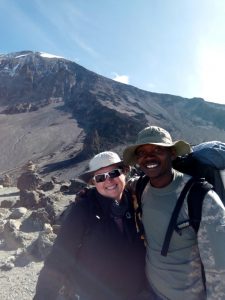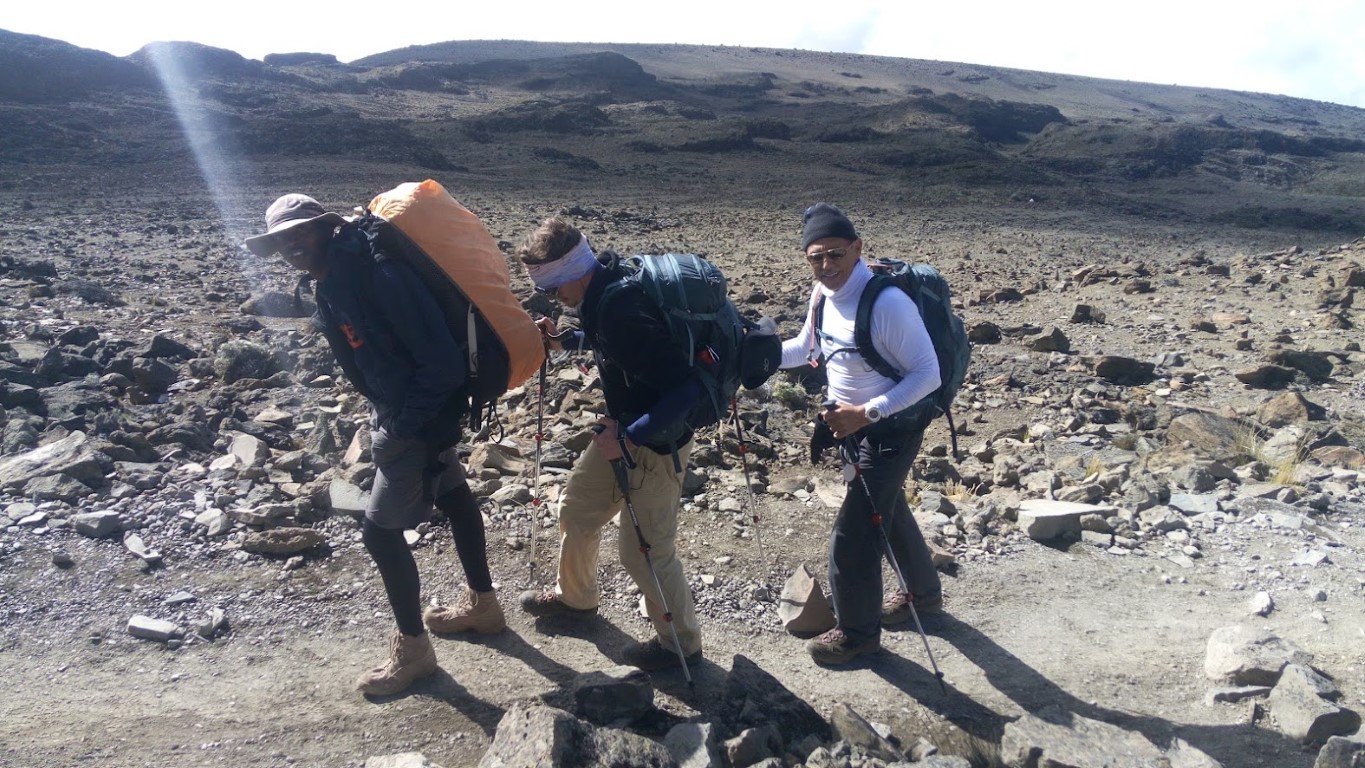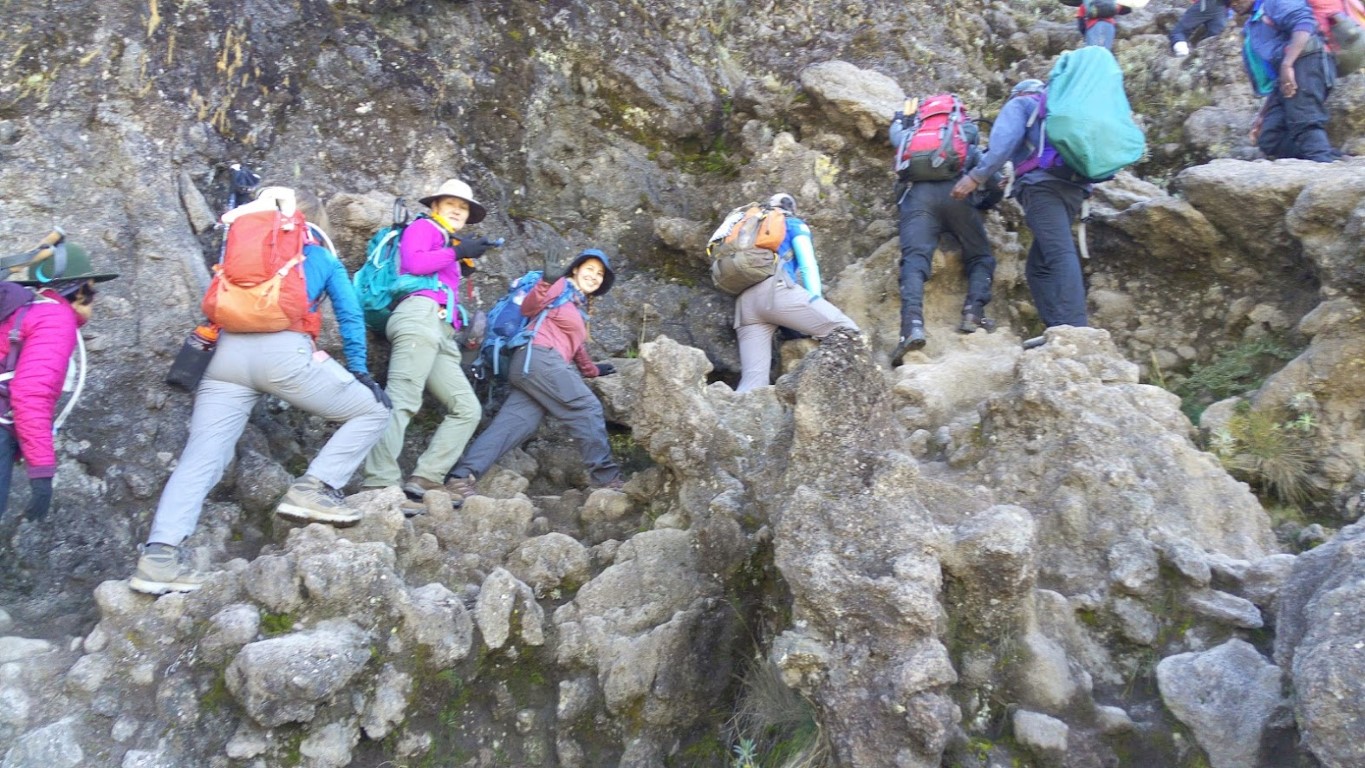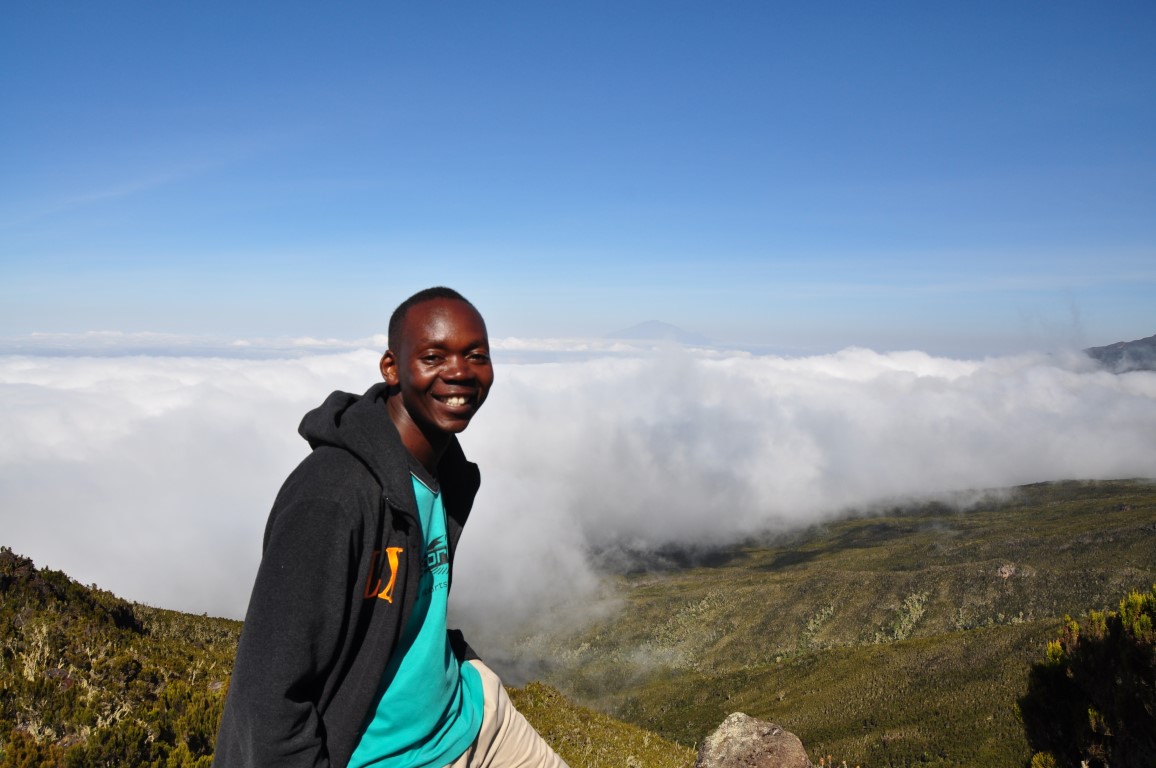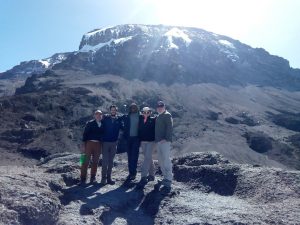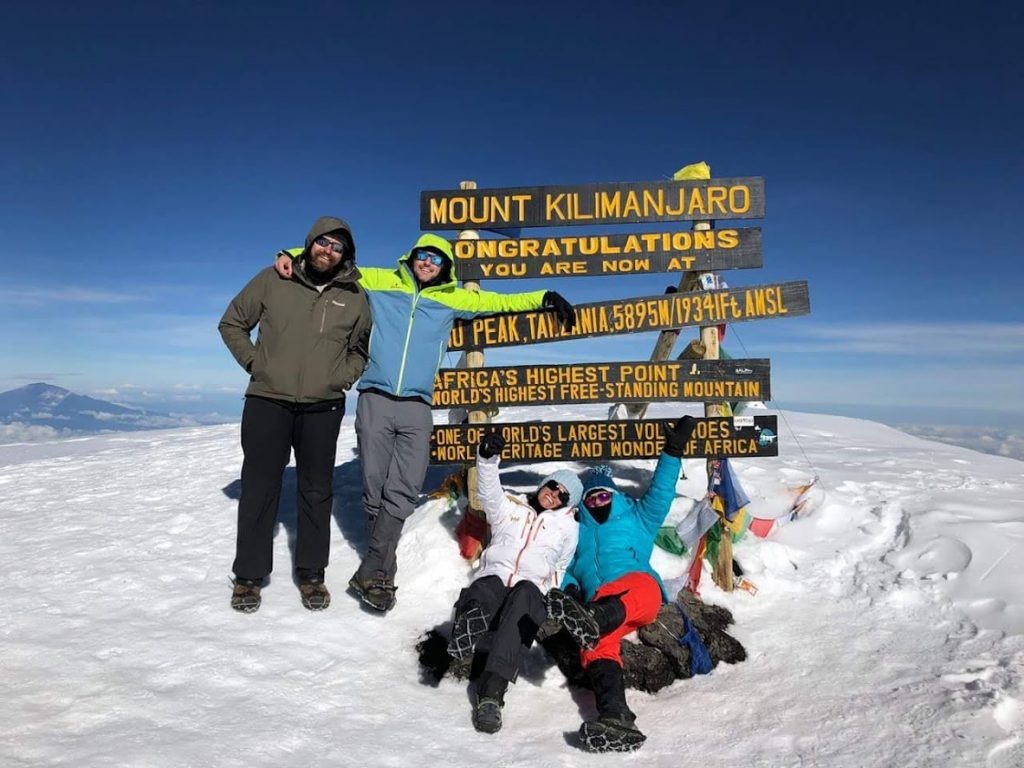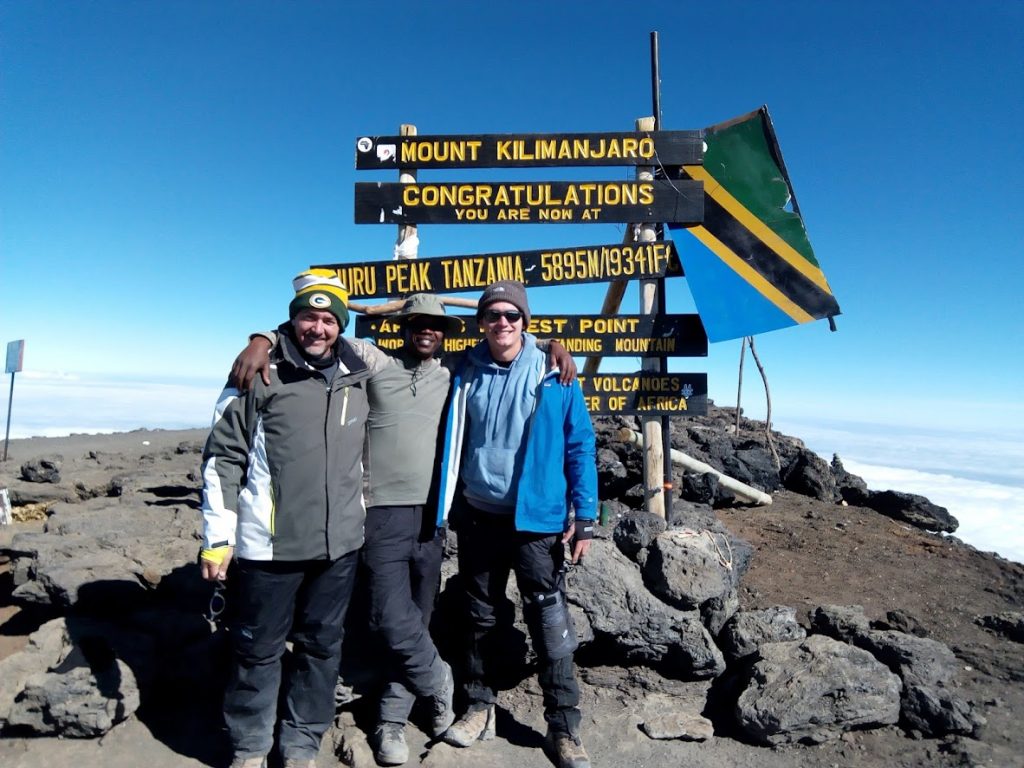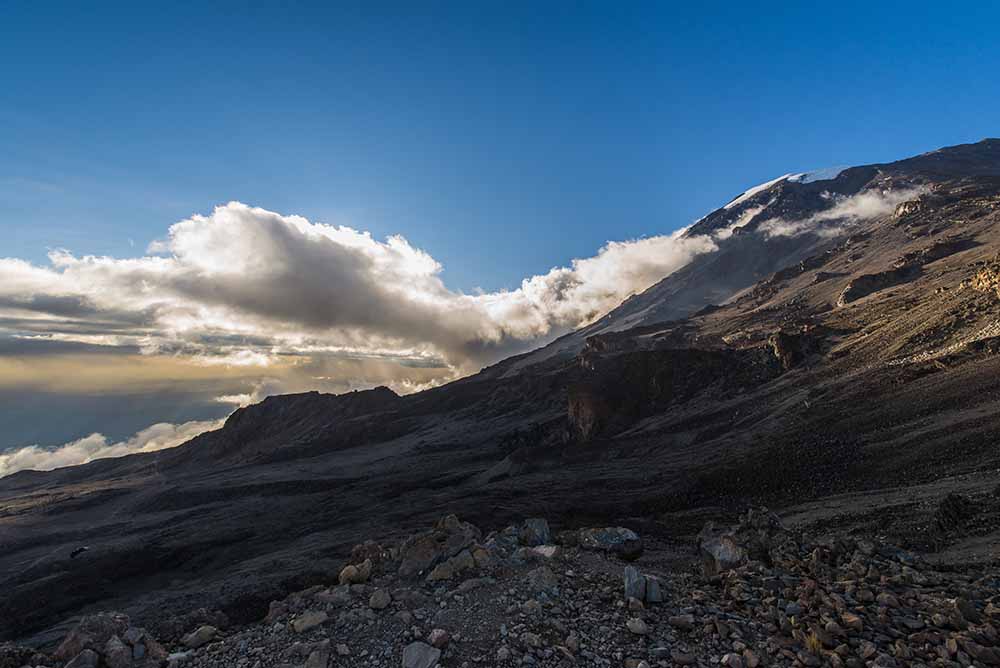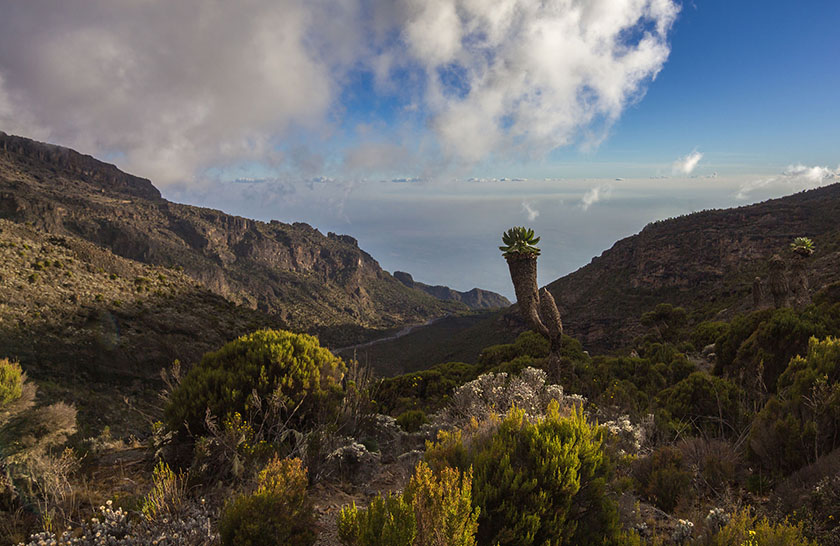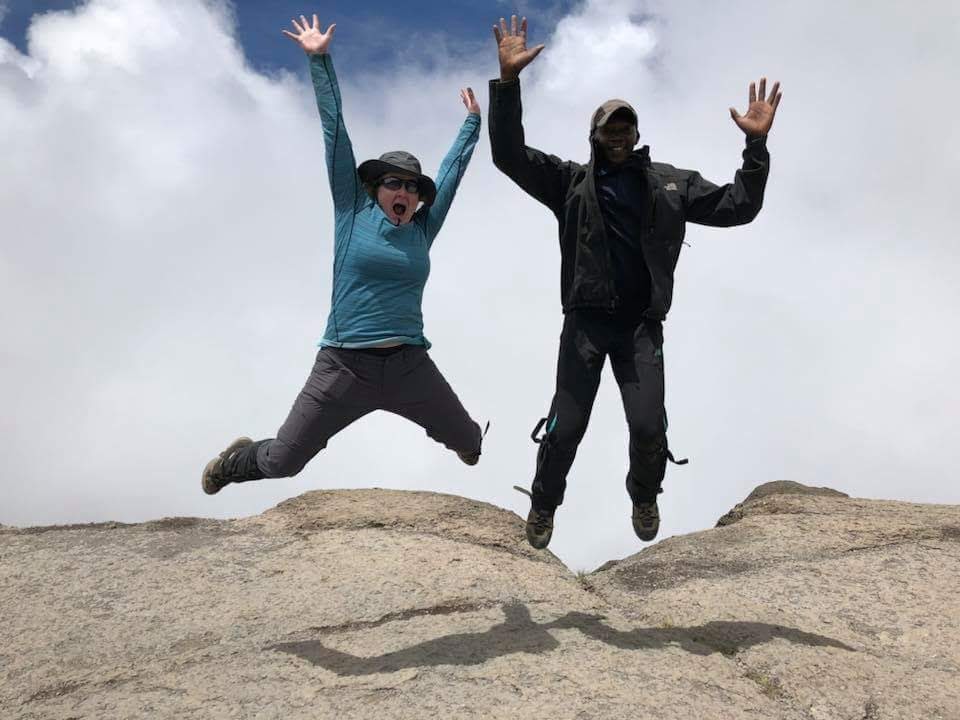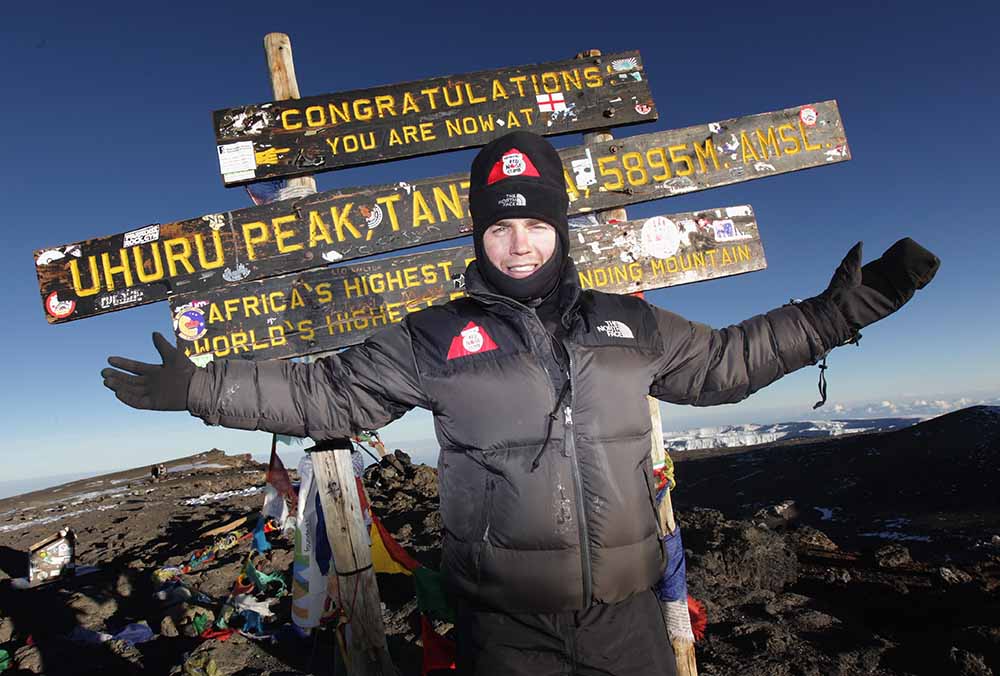Marangu Route 6 Days
About the route
The Marangu Route, known as the “Coca-Cola Route,” is the only Mount Kilimanjaro trail with hut accommodations, making it a popular choice for trekkers. It begins at Marangu Gate (1,870m) on the southeastern side, passing through lush rainforest to Mandara Hut (2,720m). The trail then ascends through moorlands to Horombo Hut (3,720m) for acclimatization before continuing to the barren alpine desert at Kibo Hut (4,703m). The summit push follows a steep climb to Gilman’s Point (5,681m), then along the crater rim to Uhuru Peak (5,895m). Descent retraces the same path. While considered one of the easier routes, its rapid ascent increases the risk of altitude sickness. It’s a good option for those seeking comfort but requires strong acclimatization strategies.
Route summary
- Day 0 : Kilimanjaro Airport to Moshi
- Day 1: Big tree Camp (2821m from Londorossi Gate (2424m)
- Day 2: Big tree Camp (2821m) – Shira Camp 1 (3350m)
- Day 3: Shira Camp 1 (3350m) – Moir Camp (4,200m)
- Day 4: Moir Camp (4,200m) – Lavar Tower Camp (4,630m)
- Day 5: Acclimatization day at Lavar Camp
- Day 6: Lavar Tower camp (4338m) – Arrow Glacier Camp (4800m)
- Day 7: Arrow Glacier Camp (4800m) – Crater Camp (5750m)
- Day 8: Crater Camp (5750m) – Uhuru Peak (5895m) – Mweka Camp (3090m)
- Day 9: Mweka Camp (3090m) – Mweka Gate (1640m) – Moshi
Day 1: Marangu Gate (1980m) – Mandara hut (2700m)
After breakfast, transfer to Marangu gate and start the climb through fascinating rain forests till you reach the first hut Mandara. Meals and overnight at the hut. (9,000ft).
Day 2: Mandara hut (2700m) – Horombo hut (3720m)
After breakfast, follow the ascending path through the alpine – meadow. The altitude begins to change and slowdown your pace while enjoying the flora and the view of Mawenzi and Kibo peaks. Arrive at the Horombo Hut 12km from Mandara. Meals and overnight at the hut. (12,520ft).
Day 3: Horrombo Hut (Acclimitization Day)
Today we walk towards the Mawenzi hut, passing the Zebra Rocks, this extra day and night at Horombo is for additional acclimatization. We recommend drinking enough water and walking slowly! All meals for the day are provided at the Horrombo hut.
Horombo hut to further improve our acclimatization.
Day 4: Horombo hut (3720m) – Kibo hut (4700m)
After breakfast, resume the climb, the landscape becomes rugged and rocky. Lobelias begin to appear. Climb to Kibo Hut. Meals and overnight at the hut. (15,520ft)
Day 5: Summit Attempt!! Kibo hut (4700m) – Uhuru Peak (5895m) – Horombo hut (3720m)
The beginning of the last ascent is made in the wee hrs of the morning while the scree is still frozen. Climb the very steep part of the route to GILMANS POINT (most difficult and tiring part). UHURU PEAK is reached within an hour’s walk along the crater rim. (19,344ft). Start the walk along the craters rim. (19,344ft). Start the descent to Horombo hut for overnight
Day 6: Horombo hut (3720m) – Marangu Gate (1980m)
After breakfast, a steady descent takes us down through moorland to the Mandara Hut. Continue descending through lush forest path to the National Park gate at Marangu. At lower elevations, it can be wet and muddy. Gaiters and trekking poles will help. Shorts and t-shirts will probably be plenty to wear (keep rain gear and warmer clothing handy).
A vehicle will meet you at Marangu gate to drive you back to your hotel in Moshi or Arusha. Don’t forget to tip your guides and porters. It is time for celebration!
Price for this Route From USD$1530
Kilimanjaro Trek Cost:
- 1 person USD$1700
- 2-4 people USD$1550
- 5-9 people USD$1500
- 10+ people USD$1450
What’s included:
- Kilimanjaro International Aport (JRO) Transfers, 2-Way
- All park entrance, hut and rescue fees
- All meals, boiled and filtered drinking water while on the mountain.
- Warm water for washing to be provided every morning and evening.
- Oxygen Cylinder – only for emergency
- English Speaking Guides (Wilderness First Responder certified), cook and porters
- Staff salaries and fees
- Transport to/from national park gates
- First aid kit and pulse oximeter
- Emergency telephone between the guides and our office in Moshi town
- 3 delicious meals daily on the mountain
- 3 litres of bottled drinking water to be provided on the first day your hike, on the mountain porters will fetch water from the streams to be boiled and filtered for you
- 2 nights lodging at Panama Inn in Moshi or Natron Palace Hotel in Arusha
- Breakfast included at Panama Inn in Moshi or Natron Palace Hotel in Arusha
What’s excluded:
- Prices do not include sleeping bags
- Gratuities
- Soda/alcohol unless otherwise noted
- Health insurance
- Visa fees
- International airfare
- Laundry
- Meals not noted on the itinerary
Kilimanjaro Rental Equipment
- Rucksack/Daypack $12
- Balacava US$ 6
- Sleeping bag (-12°C) US$ 20
- Sleeping bag (-25°C) US$ 40
- Ponchour – Heavy/Western/Europe US$ 18
- Ponchour – Light/Loca US$ 12
- Socks US$ 4
- Duffel Bag US$ 6
- Hiking Poles (2) US$ 10
- Gaiters US$ 8
- Gloves US$ 6
- Sweater US$ 5
- Long Underwear US$ 5
- Raincoat US$ 6
- Raincoat – G.T, Waterproof US$ 12
- Rain Pants US$ 12
- Torch / Flashlight US$ 5
- Camel Pack US$ 7 (rent 1 extra water bottle US$ 5)
- Sunglasses US$ 5
- Hiking Boots US$ 9
- Fleece Pants US$ 6
- Warm Jacket/Down Jacket US$ 12
- Hat or Neck Scarf US$ 6
The above list is a guide to what should be taken, little else need be taken – do not overpack. Warm head cover, thick fibre pile or down jacket, light waterproof top, trousers, light overtrousers, mittens, thermal underwear, sweater, warm socks and lightweight inner socks, watertight and well broken in sturdy boots, gaiters, sunglasses, walking poles, sleeping bag (three or four season, if three then a liner is recommended), sleeping pad, water bottle, high factor sun protection cream, small first aid kit, headtorch with extra batteries, toilet roll, small wash kit and a small daypack. A holdall or bigger rucksack to give to your porter with your main luggage. Optional: a hat with a brim.
Recommended Minimum Tipping Scale:
- Chief Guide: US$ 15-20 per day
- Assistant Guide: US$ 10-15 per day per assistant guide
- Cook: US$ 7-10 per day
- Porters: US$ 5-7 per day per porter
Tip amounts listed are per group, not per individual traveler. For instance, if 4 people are on Kilimanjaro, they should each contribute US$ 5/day if they want to tip the chief guide US$ 20.
At the ceremony your group might choose to say a few words, sing a song or something else short in order to celebrate the moment.
ENQUIRE ABOUT THIS ITINERARY
